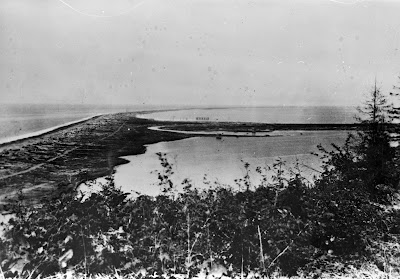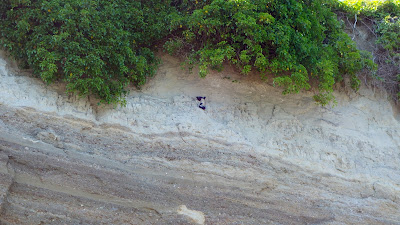We’ve posted about the lost logging town of Port Crescent on this blog before, but there are so many great historical photos of the townsite, it’s worth revisiting. This time our view is from the waterside with the 500 ft. wharf and Markham hotel just as prominent as in our previous post.
 |
| Port Crescent then (1902) and now (June 2021) |
As always, I encourage you to examine the historical photo (another from the Bert Kellogg Collection) on the Washington Rural Heritage website. The most interesting details to me are the train engine on the wharf
and the tug tied up at the end of the wharf.
Port Crescent was booming in the late 1800’s, along with many towns on the Olympic Peninsula. At its peak, the town was populated by between 600-700 people. The timber industry and prospects of becoming the terminus of a transcontinental railroad line brought investors and money.
In 1890, three Clallam County towns were in competition to be the country seat, at the time located in New Dungeness. Port Crescent and New Dungeness lost out to Port Angeles and the rest is history. The railroad never came to Port Crescent and neither of the losing towns exist today.
As a bonus, here is a second view of Port Crescent facing west from the water. You can view the original historical photo here.
 |
| Port Crescent then (date unknown) and now (June 2021) |
References:
- https://historylink.org/File/7587
- Tracks, Trails, and Tails in Clallam County, State of Washington by Harriet Fish



























